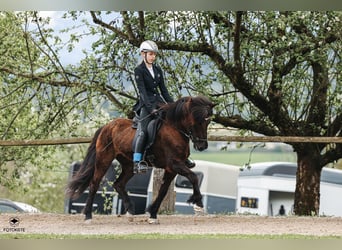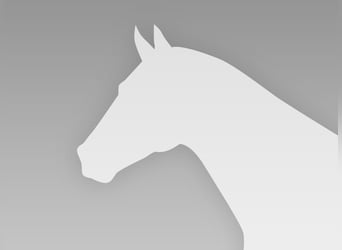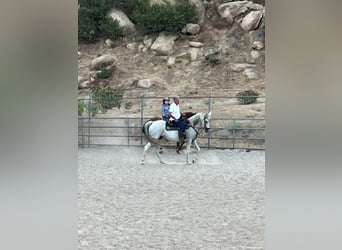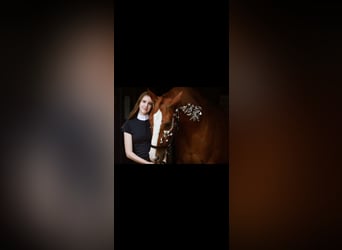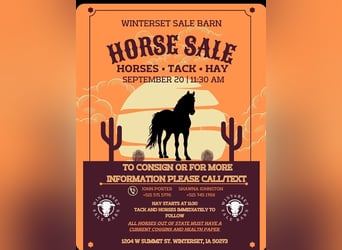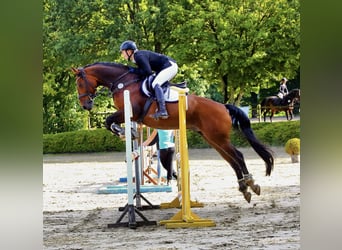AT
Horse searches for a rider
There are few more stirring sights than glossy, supremely fit Racing Horses setting off at the start of a race. The product of centuries of breeding and years of training, Racing Horses are powerful athletes whose purpose is to run fast and win races. The majority of breeders who sell a Racing Horse/Galloper are involved with the world of Thoroughbred Horse Racing. They have a deep understanding of the various lines of breeding, which have led to the horses that win races today. People who buy a Racing Horse/Galloper are usually investing in a horse which will be trained and ridden by professionals. However, some amateur riders do produce and ride in races themselves, and they can be very successful.
Similar search queries
US
US
DE
DE
DE
US
DE
Characteristics of the Racing Horse
Since most of the Racing Horses are Thoroughbreds, they are registered Thoroughbred stock. While historically there have been some small Thoroughbred racehorses, the most notable being The Lamb, most Racing Horses today will be over 15 hands high (60 inches/152 cm) but not taller than 17 hands high (68 inches/173 cm). The qualities that those who sell a Racing Horse/Galloper should emphasise are the ground-covering gallop, powerful lungs and a powerful heart, which produce speed and staying power. The other gaits of the horse; walk, trot and canter, are less important for those who buy a Racing Horse/Galloper. However, the ability to jump can be very important as well, depending on the type of racing. They can be any colour, but most are bay, chestnut and brown.
Racing Horses: The best breeds for this discipline
The Thoroughbred is the supreme example of a Racing Horse. It was created in England from diverse breeds, such as the Irish Hobby, Scottish Galloway, English Running Horse, Turkoman, Barb and Arabian. The Thoroughbred was in development from the seventeenth century onward, although it was not known by that name in the G.S.B. (General Stud Book) until 1825. The English Thoroughbred has been influential on most other Racing Horses. The American Thoroughbred, which interestingly developed without the same substantial input from “Oriental” stock (Turkoman, Barb and Arabian) was able to compete and beat English Thoroughbreds by the late nineteenth century. Other nations took up the challenge, with France playing a leading role. The Thoroughbred is not the only Racing Horse, however. Races for Arab horses are very popular in some parts of the world, particularly West Asia, the Arabian Peninsula and North Africa. Horses that run at a galloping pace, which is a four-beat movement with a moment where all four legs are suspended in the air, are the true Racing Horse/Gallopers. However, there are also other kinds of racing, such as races for trotting and pacing horses, which are often harness races. The horses draw small vehicles called sulkies, and they can be driven at very high speeds. There are even races for large draught horses like Clydesdales and Shires, both of which have their own Grand National now, and also for Shetland Ponies. The Shetland Pony Grand National is particularly appropriate as these little ponies have the C-gene for speed, which came from native British stock in the original Thoroughbreds. All these breeds can genuinely be described as Gallopers when they race, as that is the gait that they use. Thoroughbreds have been very influential on other breeds used for racing, such as the golden Kinsky Horse of Czechoslovakia.
Racing Horses/Gallopers in equestrianism
Thoroughbred Racing Horses all share the same birthday! This is for eligibility for racing since the majority of horses are born in the spring, both north or south of the equator. This gives them the chance to grow naturally while their dams (mothers) graze on good spring and summer grass. They begin to race as two-, or three-year-olds, though the standardisation of the birthdate means they are older than this suggests. Until the age of four, male horses are known as colts, and female horses, fillies. There are prestigious races for both colts and fillies, as well as major events, such as the Epsom Derby, which are open to both. The most demanding races are those that involve formidable obstacles to be jumped, including the Aintree Grand National near Liverpool. Many nations have their own equivalents, like the Pardubice in Czechoslovakia. As well as being divided into flat racers and jumpers, Racing Horses are subdivided into sprinters, which are most successful over short distances, milers, which race over the distance of a mile, and stayers, which race more than a mile and six furlongs. The power, athleticism and speed of Racing Horses have also been influential on other breeds, particularly warmbloods. Retired Racing Horses/Gallopers often make good riding horses for experienced riders.
